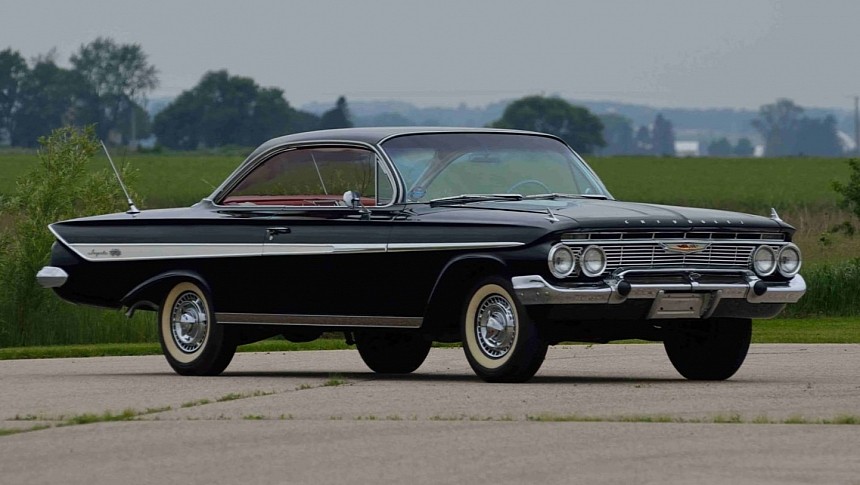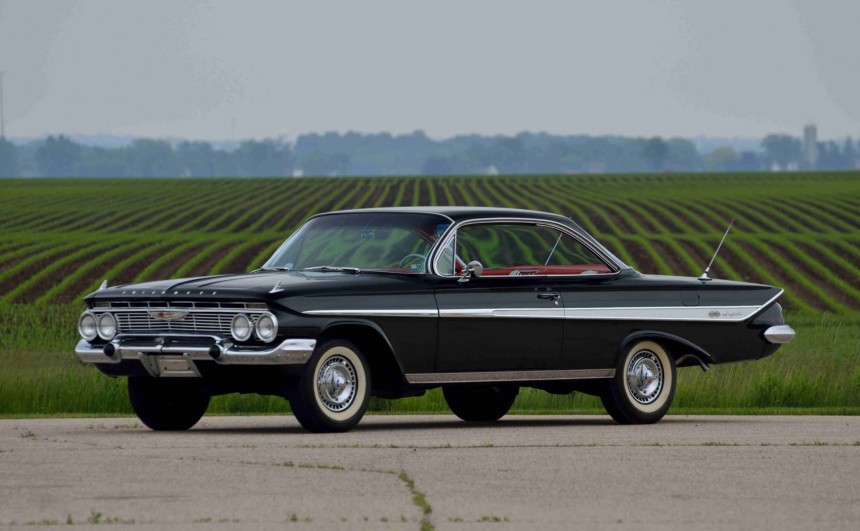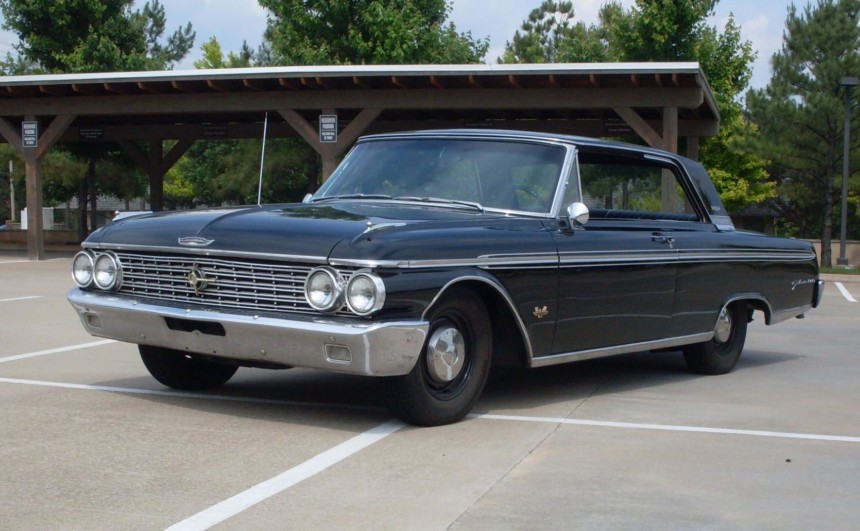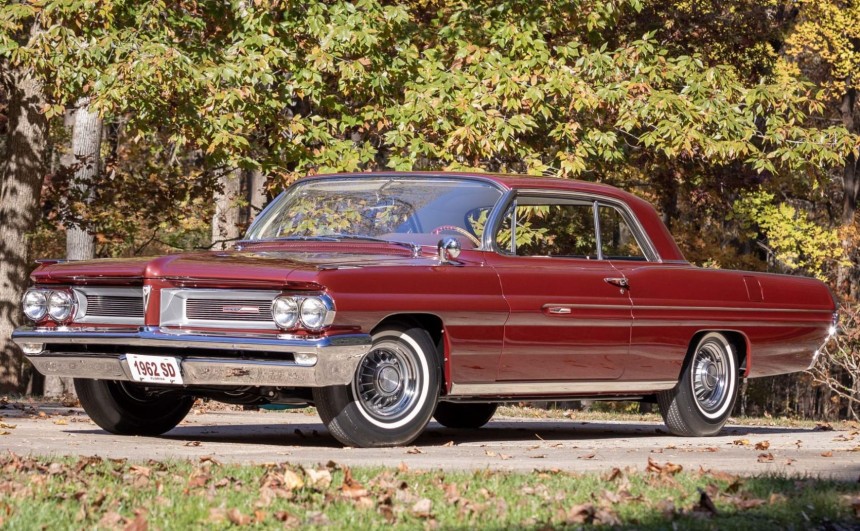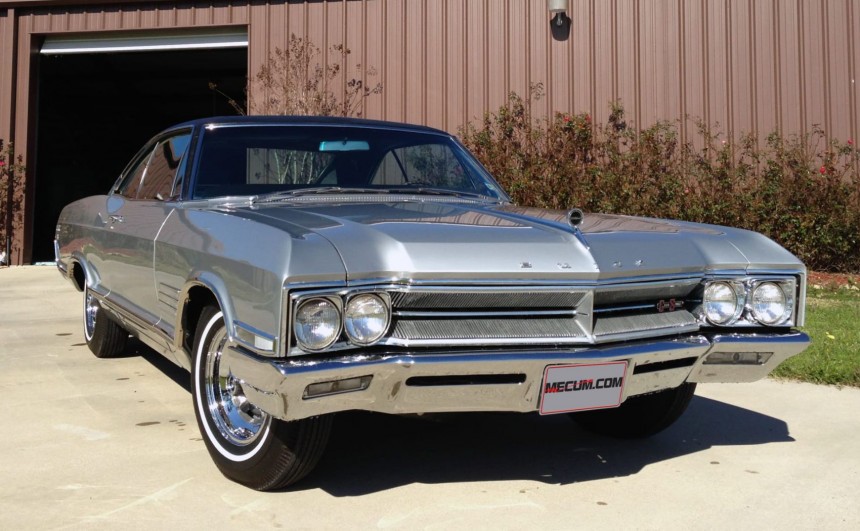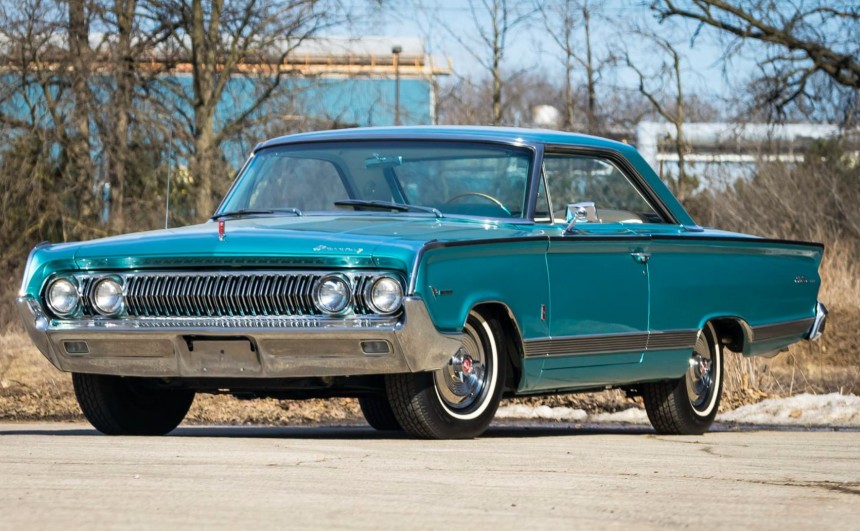Equipped with potent V8s, classic muscle cars were built to cover the quarter mile as fast as possible. But, while those models stole the high-performance limelight, some of their larger siblings were capable of surprisingly good quarter-mile runs during the 1960s.
The golden age of muscle cars started in the first part of the sixties when American manufacturers began transplanting big and powerful V8s from their full-size models into the engine bays of intermediates.
By 1970, this trend spread to even smaller platforms, leading to some flashy and ridiculously powerful quarter-mile sprinters like the Chevelle SS 454 LS6, Plymouth HEMI 'Cuda, Chevrolet Camaro ZL1, or Oldsmobile Hurst/Olds.
However, before the emergence of these iconic muscle cars, surprisingly quick full-size models without flashy paint jobs, hood scoops, or spoilers were roaming American roads.
Most enthusiasts have forgotten about these awesome classic sleepers, so in this article, we'll remember some of the quickest, most underrated full-size sleepers of the 1960s.
For some, the third-generation Impala (1961-1964) is known for being a popular base for lowrider builds, but for hardcore Chevy fans, it's the first model to receive the Super Sport package.
Synonymous with the Bowtie brand's most legendary muscle cars, the SS package was added to the Impala lineup around the middle of the 1961 model year.
For an extra $53.80 ($527.86 today), it delivered unique trims inside-out, heavy-duty springs and shocks, and narrow-band whitewall tires.
As standard, the SS-equipped Impalas (regardless of body style) came with a 305-hp 348-ci (5.7-liter) V8, but potential customers who wanted more power could go for the new 360-hp Turbo-Fire 409 (6.7-liter).
When equipped with this bored-out version of the 348 that received forged pistons, solid lifters, and an aluminum intake with a four-barrel carb, the nearly two-ton Impala SS could sprint from 0 to 60 mph (97 kph) in 7.8 seconds.
Furthermore, according to a test conducted by MotorTrend in 1961, the car could run the quarter mile in 14.02 seconds at 98 mph (157.7 kph) when fitted with the optional 4.56 rear axle.
During that model year, Chevy built 491,000 Impalas, but just 453 were equipped with the SS package. Of those, only 142 got the 409 V8, making a surviving model extremely rare.
By the start of 1962, Ford was lagging behind its competitors in the high-performance engine department, as its production models lacked an engine bigger than 400 cubic inches (6.55 liters).
That didn't last long, as the Blue Oval introduced a new 406-ci (6.6-liter) V8 for its 1962 full-size offerings, aiming to homologate the engine for NASCAR.
By the second part of the model year, Ford also launched a direct competitor for the Impala SS: the Galaxie 500XL.
A sportier version of the standard Galaxie 500, the XL (which stood for eXtra Lively, not Extra Large) could be equipped with the 406 engine, which came in two carburetor versions: a single four-barrel offering 385 hp or a potent triple-two-barrel rated at 405 hp.
In the latter configuration, the Galaxie 500XL could sprint to 60 mph (97 kph) from a standstill in 7.1 seconds and achieve a quarter-mile time in the low 15s.
Available in either hardtop or convertible guise, the XL was a potent full-size model, but it never came close to the Impala SS in terms of sales.
Nearly four decades before the Super Duty moniker became synonymous with Ford's heavy-duty pickup trucks, it was used by Pontiac for its most potent V8.
For the 1962 model year, the GM division introduced a new full-size two-door coupe dubbed Grand Prix.
While two performance-oriented versions of the standard 389-ci (6.4-liter) V8 were available on the options list, the most potent engine was added to the lineup late in the model year.
Displacing 421 (7.0 liters), the V8 was available in two versions: the 320-hp four-barrel and the drag strip-oriented Super Duty with two four-barrel carburetors, and an output rated at 405 hp.
Equipped with this option, the Grand Prix became a veritable supercar long before the term became popular.
It could reportedly accelerate from 0 to 60 mph (97 kph) in about 6 seconds and ran the quarter mile in the low-13s at over 100 mph (161 kph). That made it nearly as quick as a 1970 HEMI 'Cuda.
Just sixteen 1961 Grand Prix Pontiacs were equipped with the Super Duty engine, and of those, only a handful have survived.
For the 1966 model year, the now-legendary Gran Sport Performance Group was added to the second-generation Wildcat's options list.
Available only for the two-door hardtop and convertible versions, the package upgraded the full-size model with several performance-oriented goodies like heavy-duty suspension components, a quick ratio steering box, or a 3.42-ratio limited-slip differential.
The GS-equipped Wildcat's standard engine was a single-carb 425-ci (7.0-liter) V8 rated at 340 hp. But, those who wanted more power could select the optional dual-carb version that added 20 additional horses.
Equipped with the dual-carb 425, the 4,300-pound (1,950 kg) Wildcat GS could sprint to 60 mph (97 kph) from a standstill in 7.4 seconds and run the quarter mile in 15.5 seconds at 85 mph (137 kph).
The Marauder nameplate debuted mid-model-year in 1963 as a sub-series for each of Mercury's three full-size offerings: the Monterey, Monterey Custom, and S-55 -albeit restricted to two-door body styles.
For 1964, the Marauder's availability was extended to four-door hardtops, including Parklane models, but the most impressive of all was the Parklane-based two-door notchback hardtop coupe.
The standard engine was a 390-ci (6.4-liter) FE V8, while the option list included two 427-ci (7.0-liter) versions, of which the most powerful was the dual-four-barrel R code "Super Marauder," rated at 425 hp.
With this engine under the hood, the full-size coupe accelerated to 60 mph (97 kph) in seven seconds flat and ran the quarter mile in the low 15s.
Only 42 R-code Marauders were built in 1966, and of those, just nine were Parklane-based two-door notchback hardtop coupes.
By 1970, this trend spread to even smaller platforms, leading to some flashy and ridiculously powerful quarter-mile sprinters like the Chevelle SS 454 LS6, Plymouth HEMI 'Cuda, Chevrolet Camaro ZL1, or Oldsmobile Hurst/Olds.
However, before the emergence of these iconic muscle cars, surprisingly quick full-size models without flashy paint jobs, hood scoops, or spoilers were roaming American roads.
Most enthusiasts have forgotten about these awesome classic sleepers, so in this article, we'll remember some of the quickest, most underrated full-size sleepers of the 1960s.
1961 Chevrolet Impala SS 409
Synonymous with the Bowtie brand's most legendary muscle cars, the SS package was added to the Impala lineup around the middle of the 1961 model year.
For an extra $53.80 ($527.86 today), it delivered unique trims inside-out, heavy-duty springs and shocks, and narrow-band whitewall tires.
As standard, the SS-equipped Impalas (regardless of body style) came with a 305-hp 348-ci (5.7-liter) V8, but potential customers who wanted more power could go for the new 360-hp Turbo-Fire 409 (6.7-liter).
When equipped with this bored-out version of the 348 that received forged pistons, solid lifters, and an aluminum intake with a four-barrel carb, the nearly two-ton Impala SS could sprint from 0 to 60 mph (97 kph) in 7.8 seconds.
Furthermore, according to a test conducted by MotorTrend in 1961, the car could run the quarter mile in 14.02 seconds at 98 mph (157.7 kph) when fitted with the optional 4.56 rear axle.
During that model year, Chevy built 491,000 Impalas, but just 453 were equipped with the SS package. Of those, only 142 got the 409 V8, making a surviving model extremely rare.
1962 Ford Galaxie 500XL 406
That didn't last long, as the Blue Oval introduced a new 406-ci (6.6-liter) V8 for its 1962 full-size offerings, aiming to homologate the engine for NASCAR.
By the second part of the model year, Ford also launched a direct competitor for the Impala SS: the Galaxie 500XL.
A sportier version of the standard Galaxie 500, the XL (which stood for eXtra Lively, not Extra Large) could be equipped with the 406 engine, which came in two carburetor versions: a single four-barrel offering 385 hp or a potent triple-two-barrel rated at 405 hp.
In the latter configuration, the Galaxie 500XL could sprint to 60 mph (97 kph) from a standstill in 7.1 seconds and achieve a quarter-mile time in the low 15s.
Available in either hardtop or convertible guise, the XL was a potent full-size model, but it never came close to the Impala SS in terms of sales.
1962 Pontiac Grand Prix 421 Super Duty
For the 1962 model year, the GM division introduced a new full-size two-door coupe dubbed Grand Prix.
While two performance-oriented versions of the standard 389-ci (6.4-liter) V8 were available on the options list, the most potent engine was added to the lineup late in the model year.
Displacing 421 (7.0 liters), the V8 was available in two versions: the 320-hp four-barrel and the drag strip-oriented Super Duty with two four-barrel carburetors, and an output rated at 405 hp.
Equipped with this option, the Grand Prix became a veritable supercar long before the term became popular.
It could reportedly accelerate from 0 to 60 mph (97 kph) in about 6 seconds and ran the quarter mile in the low-13s at over 100 mph (161 kph). That made it nearly as quick as a 1970 HEMI 'Cuda.
Just sixteen 1961 Grand Prix Pontiacs were equipped with the Super Duty engine, and of those, only a handful have survived.
1966 Buick Wildcat GS Coupe
Available only for the two-door hardtop and convertible versions, the package upgraded the full-size model with several performance-oriented goodies like heavy-duty suspension components, a quick ratio steering box, or a 3.42-ratio limited-slip differential.
The GS-equipped Wildcat's standard engine was a single-carb 425-ci (7.0-liter) V8 rated at 340 hp. But, those who wanted more power could select the optional dual-carb version that added 20 additional horses.
Equipped with the dual-carb 425, the 4,300-pound (1,950 kg) Wildcat GS could sprint to 60 mph (97 kph) from a standstill in 7.4 seconds and run the quarter mile in 15.5 seconds at 85 mph (137 kph).
1964 Mercury Super Marauder 427
For 1964, the Marauder's availability was extended to four-door hardtops, including Parklane models, but the most impressive of all was the Parklane-based two-door notchback hardtop coupe.
The standard engine was a 390-ci (6.4-liter) FE V8, while the option list included two 427-ci (7.0-liter) versions, of which the most powerful was the dual-four-barrel R code "Super Marauder," rated at 425 hp.
With this engine under the hood, the full-size coupe accelerated to 60 mph (97 kph) in seven seconds flat and ran the quarter mile in the low 15s.
Only 42 R-code Marauders were built in 1966, and of those, just nine were Parklane-based two-door notchback hardtop coupes.
